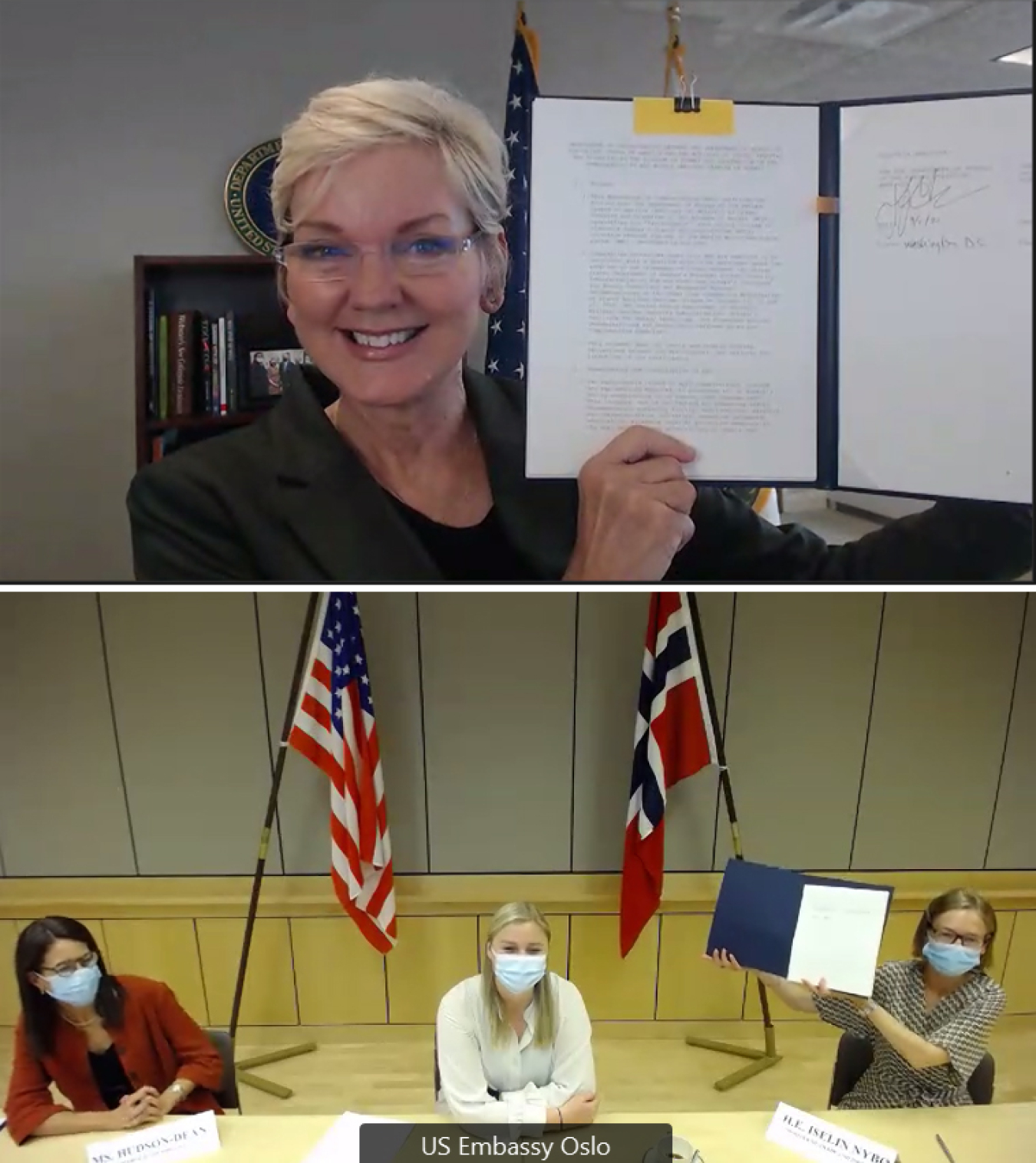As summer comes to an end, the U.S. Department of Energy (DOE) is at the center of response and recovery efforts following Hurricane Ida, while continuing to propel research and innovations that will help achieve a net-zero economy by 2050.
September 13, 2021As summer comes to an end, the U.S. Department of Energy (DOE) is at the center of response and recovery efforts following Hurricane Ida, while continuing to propel research and innovations that will help achieve a net-zero economy by 2050.
Hurricane Ida
As Hurricane Ida barreled toward the Southern coast as a category 4 storm Sunday, August 29th, the DOE’s Office of Cybersecurity, Energy Security, and Emergency Response (CESER) had begun working with FEMA and and our interagency and industry partners to prepare for the storm’s impacts. As Hurricane Ida continued moving up the East coast as Tropical Storm Ida, DOE deployed responders to support FEMA and state operations centers, and issued daily public situation reports to advise on the storm’s impacts to the electricity, oil, and natural gas sectors. This was an empty link: Get the latest Get the latest situation reports.
Secretary of Energy Jennifer M. Granholm received a briefing at FEMA’s National Response Coordination Center on August 31st and met with DOE staffers who are part of the interagency response team at the site. She also expressed her gratitude for the employees putting in long hours as they supported families, communities, and energy companies working to recover. More than 27,000 utility workers have been working around the clock to restore power and rebuild fallen transmission lines in the wake of the storm. Read more.
As part of our emergency response and energy security mission, DOE also approved two Strategic Petroleum Reserve exchanges to bolster the fuel supply chain and make sure fuel can continue to get where it’s needed as quickly as possible—read more here and here.
Achieving a Net-Zero Economy
Researchers at Pacific Northwest National Laboratory are discovering innovative new ways to make carbon capture more affordable, which is critical to combating the climate crisis.This was an empty link: Oak Ridge National Laboratory licensed wireless charging for electric vehicles, which could one day lead to EVs being charged at highway speeds. Argonne National Laboratory researchers are working on technology to convert CO2 into ethanol.
We released our Solar Futures Study which details the significant role solar will play in decarbonizing the nation’s power grid. The study shows that by 2035, solar energy has the potential to power 40% of the nation’s electricity, drive deep decarbonization of the grid, and employ as much as 1.5 million people—without raising electricity prices. We also announced nearly $65 million for biofuel research and development to reduce airplane and ship emissions by creating a replacement for petroleum fuels.
Here are some more bright spots:
- A microreactor is being built at INL that will be critical to speeding up the deployment of advance nuclear technologies.
- The DOE and University of Central Florida are working to produce hydrogen from seawater.
- $30 million investment in bioenergy technology R&D will help develop low-carbon fuel will help bring down the carbon footprints of ships and planes to reach net-zero.
- And new private sector commitments underscore just how critical the bipartisan Infrastructure Investment and Jobs Act will be to American innovation.
Energy Jobs and Workforce Development
We highlighted careers in the nuclear industry which contribute $60 billion to our economy annually. We also posted a video from our Office of Environmental Management to underscore how DOE’s environmental cleanup efforts support 43,000 jobs at the Oak Ridge site alone.
Wind energy in the United States grew at a record pace in 2020, representing the largest source of new additions to the U.S. electric-generating capacity—supporting over 115,000 jobs. Read more in our 2021 Wind Market Reports.
International Affairs

Secretary Granholm and Ukraine’s Minister of Energy signed a Joint Statement of Intent on August 31st to solidify our mutual interest in fighting the climate crisis, creating new opportunities for rapid decarbonization cooperation with a key European ally, and help Ukraine strengthen its energy security and leadership in the region. On September 9th, Secretary Granholm and Indian Minister of Petroleum and Natural Gas and Housing and Urban Affairs Hardeep Puri co-chaired the virtual launch of the revamped U.S.-India Strategic Clean Energy Partnership to advance the climate and clean energy goals of the United States and India. Additionally, Secretary Granholm and Norwegian Minister of Trade and Industry Iselin Nybø signed an agreement to move ahead with a plan to eliminate all highly-enriched uranium from Norway, a win for non-proliferation and nuclear security.
Energy Spotlight
Wednesday, August 18 and Thursday, August 19, Secretary Granholm joined U.S. Senator Martin Heinrich (D-NM) in Albuquerque before visiting the Farmington and Navajo Nation area. Secretary Granholm and Senator Heinrich heard directly from Albuquerque community members, local leaders, and organizations about New Mexico’s ongoing energy transition as the state increases electrification and builds new clean energy sources to lower costs, better public health and create more equitable, resilient, and efficient communities. Watch our recap video!


